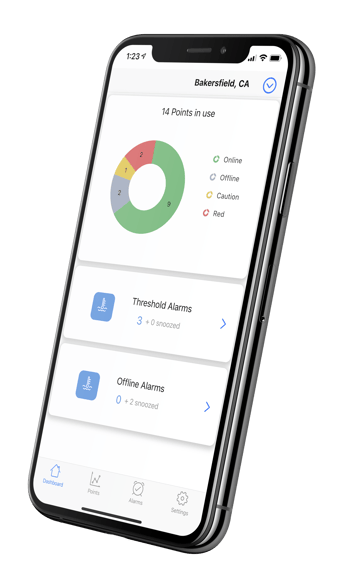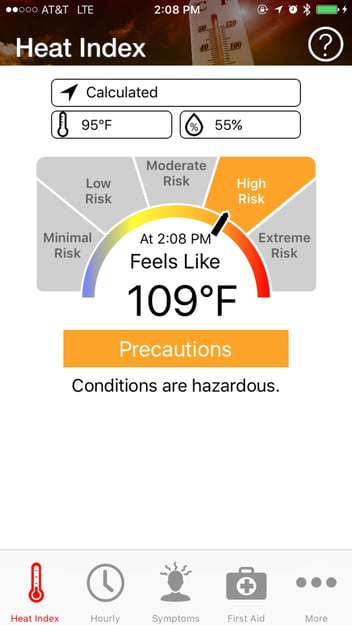OSHA’s First Step Towards A Federal Heat Standard
In order to maintain a proper work environment that meets heat-illness prevention standards, there must be adequate cooling solutions.
OSHA, the Occupational Safety and Health Administration, is addressing the concern of heat-related illnesses and injuries that occur on worksites all over the nation.
Whether outdoors or indoors, all employers must have the proper conditions for workers during times of extreme heat.
In order to address the concerns of worker conditions in the heat, OSHA announced in October last year that they will be increasing monitoring and investigations of heat-related injuries, illnesses, and deaths.
With this announcement came the Advanced Notice of Proposed Rulemaking (ANPRM) for Heat Injury and Illness Prevention in Outdoor and Indoor Work Settings.
This notice was the first step towards establishing a federal heat standard.

The process of establishing federal and government authorized standards, administrations must receive public comments and data on recommendations to solve certain issues.
In the case of heat-related illness, OSHA invited employers and the public to comment and offer expertise and data on heat thresholds, heat-related workplace issues, heat acclimation planning, and exposure monitoring.
After collecting information for three months, OSHA began their review process to gather information that will help establish necessary regulations to protect workers from excessive heat exposure.
Despite the lack of federal regulations and guidelines, certain states have been developing their own requirements for protecting workers from excessive heat.
States including California, Minnesota, Oregon, and Washington have all developed provisions for the following particulars:
- type of workplace
- temperature thresholds
- employee protection.
Employee protection in their terms focuses on methods of hydration, shade, monitoring, training, and other actions that employers can take.

Backtracking to the ANPRM, this standard is set to be specific to heat-related injury and illness prevention.
This standard will provide the federally required employer obligations and the measures necessary to more effectively protect employees from hazardous heat.
The ultimate goal of the standard is to prevent and reduce the number of occupational injuries, illnesses, and fatalities caused by exposure to hazardous heat.
The publication of the ANPRM allowed OSHA to focus on issues that include the scope of a standard, heat stress thresholds across varying industries, heat exposure monitoring methods, and heat acclimation planning.
The issues include the nature, types, and effectiveness of controls that may be required to become a part of a standard.
Other information that reached OSHA’s specific topics of information include other vital factors such as race and gender pay disparity in “Inequalities in exposures and outcomes among workers of color and low-wage earners'' and climate change in “Impacts of climate change on hazardous heat exposure for outdoor and indoor settings.”

The current scope of the proposed OSHA federal rule is the solicitation of information to large and small employers with a multitude of work arrangements across the U.S.
The rule’s scope even has a regional focus on the Southern states of
- Mississippi
- Arkansas
- South Carolina
- West Virginia
- Nevada
The rule also cites a number of strategies for employers to reduce occupational heat-related injuries and illnesses including: - heat injury and illness prevention programs
- engineering controls, administrative controls and utilizing personal protective equipment (PPE);
- acclimatization (the process of the human body becoming accustomed to new environmental conditions by gradually adapting to the conditions over time)
- monitoring the physiological, medical, and exposure of workers
- planning and responding to heat-illness emergencies and
- worker training and engagement
Climate change and the socioeconomic impact on exposure to hazardous heat are also major parts of the proposed OSHA federal rule.
Climate change is estimated to cause a negative result of the loss of 2 billion labor hours and the cost of $160 billion in lost wages with extreme temperatures alone.
The proposed rule acknowledges this and other inequalities and exposures for workers exposed to hazardous heat.
The rule also addresses the concerns of cities that display an increased excessive heat impact on pregnant workers and people of color.

Studies show that heat is the number one cause of weather-related events in the workplace.
Heat received this ranking as it can exacerbate existing health conditions such as
- heart problems
- kidney failure
- asthma
Excessive heat also has effect on the workplace as it leads to lower production and worker errors due to dehydration and heat-related impairment.
Studies have indicated that worker productivity declines 4 percent for every degree above 80℉.
Excessive workplace heat exposure is also linked to
- reduced work hours
- higher employee turnover
- increased medical leave
- additional employers costs from hiring & training of new employees.
The Atlantic Council's Adrienne Arsht-Rockefeller Foundation Resilience Center estimates economic loss due to heat to total to at least $100 billion annually.
Large impacts such as this are likely to double by 2030 and quintuple by 2040 based on projections of continued heat intensification from climate change.
Studies also show that hydration alone, being one of the treatments for excessive heat, does not reduce core body temperature.
Proper hydration and constant climate control monitoring are needed to improve full mental functioning that decreases with prolonged heat exposure.
Facility managers can proactively initiate heat mitigation options before OSHA-imposed federal regulations through monitoring. Options for monitoring consist of:
- Implemented centralized climate control
- Using cooling products such as evaporative cooling fans or towers tied into permanent systems
- Establishing cooling stations that incorporate access to hydrated in conjunction with portable cooling products

Additional monitoring is done through the decisions of employers.
An important question to ask is whether owning or renting a cooling solution is better.
The answer to this question is dependent upon need and financial flexibility.
Despite this decision, it is critical for employers to take steps such as investing in cooling solutions to protect workers from heat exposure and related illnesses and injuries.
Industries can take a step towards heat prevention methods today with Sonicu.
Sonicu technology includes alarms and notifications for thresholds.
Alarms that include threshold ranges, amount of time before an alarm goes off, and specific alarm recipients can be set up within the Sonicu system.
Customization including the method of receiving alarm notifications and the generation of alarm notification reports are a few of the many intricate features of the Sonicu platform.
To find out more about the alarm and notifications feature, watch this video and schedule a demo today.

Sources:
“Alarms and Notifications.” YouTube, YouTube, 21 Mar. 2022, www.youtube.com/watch?v=0ck9TceccuM.
Coffman, Jackie, et al. “OSHA Issues ANPRM on Heat Injury and Illness Prevention.” JD Supra, www.jdsupra.com/legalnews/osha-issues-anprm-on-heat-injury-and-8154517/.
Heat Injury and Illness Prevention in Outdoor and Indoor Work Settings Rulemaking | Occupational Safety and Health Administration, www.osha.gov/heat-exposure/rulemaking.
Tenn, Ashlee. “Cooling Solutions Feature: OSHA, Heat Exposure, and Worker Safety.” Facility Executive, 27 June 2022, https://facilityexecutive.com/2022/06/cooling-solutions-feature-osha-heat-exposure-worker-safety/




